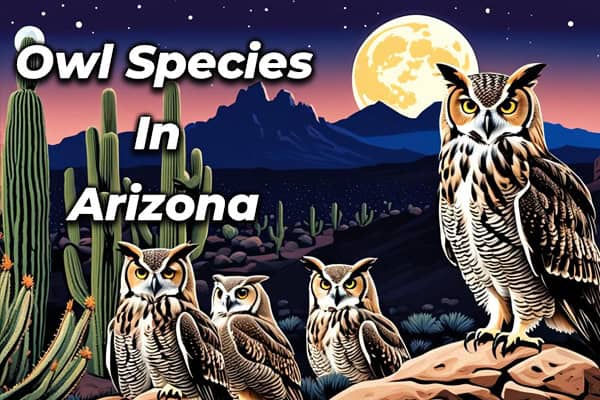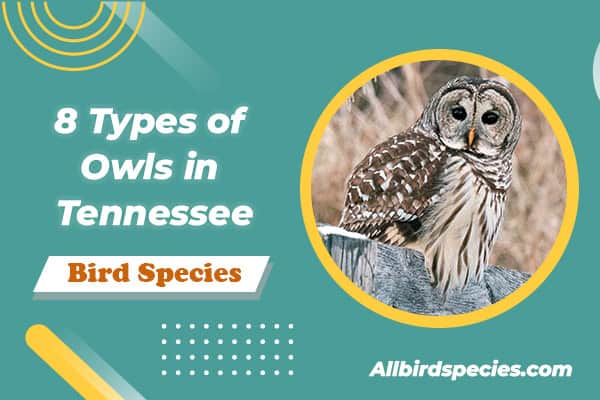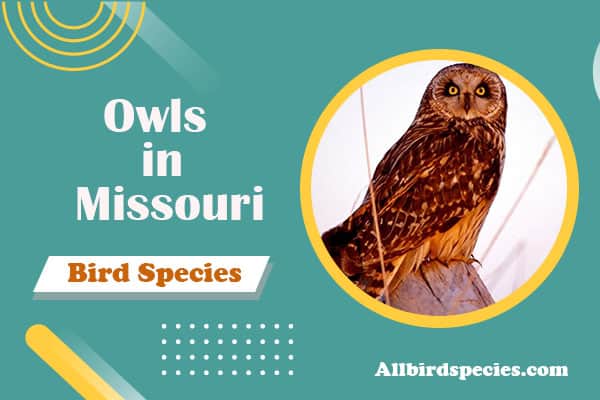Top 13 Owls Species In Arizona (With Pictures)
sEver wondered about the owls living in Arizona? This state is known for its diverse bird life, including many owl species. From the big Great Horned Owl to the tiny Elf Owl, Arizona is a great place for these night birds.
Arizona is home to 13 different owl species, each with its special traits and interesting ways. Let’s dive into the world of Arizona’s owls and learn about these silent hunters. Get ready to be amazed by the variety and beauty of these birds!
~Learn About 13 Species Of Owls Found In Arizona~
- Great Horned Owl
- Barn Owl
- Flammulated Owl
- Whiskered Screech Owl
- Northern Saw-Whet Owl
- Western Screech Owl
- Long-Eared Owl
- Northern Pygmy Owl
- Elf Owl
- Burrowing Owl
- Spotted Owl
- Short-Eared Owl
- Ferruginous Pygmy Owl
So Let’s explore each bird one by one in detail.
1. Great Horned Owl
- Scientific name – Bubo virginianus
- Lifespan – 28 (maximum recorded)
- Size – 17 to 25 inches
- Weight – 2.6 to 3.5 lb
- Wingspan – 3 to 5 foots
The great horned owl, also known as the tiger owl, is a powerful bird found across North America. It ranges from the Sonora Desert in Arizona to Canada’s forests. Also, These owls stand out with their tufted heads, mottled greyish-brown feathers, and bright yellow eyes.

Habitat and Nesting Behavior
Great horned owls live in wooded areas for nesting and roosting, and open spaces for hunting. Also, They adapt to many environments, from dense forests to cities. Also, They nest in tree hollows, on cliffs, or in human-made structures, sometimes taking over other animals’ homes.
Diet and Hunting Techniques
These owls eat over 200 types of mammals and 300 birds. They mainly hunt rodents but also eat invertebrates, reptiles, amphibians, fish, and carrion. Also, They hunt at night and during the day, using their night vision and silent flight to catch prey.
Conservation Status and Threats
Great horned owl numbers have been going down over time. Also, They were once hunted a lot, and pesticides harm them indirectly. They don’t migrate and stay in one place for life, making them vulnerable to local dangers and changes in their homes.
2. Barn Owl
- Scientific name – Tyto alba
- Lifespan – 25 years (captivity: maximum recorded)
- Size – 13 to 15 inches
- Weight – 8 to 25 oz
- Wingspan – 31 to 37 inches
Barn owls are often called the “demon owl,” “ghost owl,” or “death owl.” They are fascinating creatures that play a key role in nature. With their unique heart-shaped faces and pale, speckled feathers, they seem like ghosts in the night.

Also, These owls are found all over the world, including in North America, South America, Europe, Africa, India, Southeast Asia, and Australia. They live in many places like open lands, farms, cities, and forests. They like areas with trees and lots of food.
Barn owls of Arizona are amazing hunters. They use their sharp hearing to find prey in the dark. They eat many rodents, sometimes over 1,000 rats a year. They also eat birds, fish, reptiles, and insects, helping to control pests.
Their white feathers and silent flying make people think they are special. Some believe their calls mean death. But, these owls are really important for nature. They keep the number of rodents in check.
3. Flammulated Owl
- Scientific name – Psiloscops flammeolus
- Lifespan – 8 years (maximum recorded)
- Size – 6 to 7 inches
- Weight – 1.5 to 2 oz
- Wingspan – 14 to 16 inches
The flammulated owl is a small, migratory owl found in the western United States, including Arizona. It has flame-like markings on its wings, earning it the name “flame-marked owl.” Some owls may look grayer without these markings. Their feathers are a mix of dark brown, gray, buff, and white, helping them blend into their forest homes.
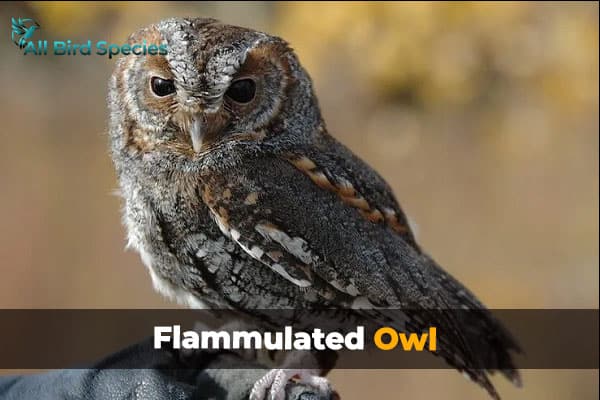
Description and Range
Flammulated owls migrate between breeding grounds in the western United States and wintering grounds in Mexico, Central America, and southern parts of the United States, including Arizona. They are hard to see because they blend in well and are not easy to spot.
Habitat and Nesting
These owls live in mature mountain forests and nest in tree cavities or old nests of other birds. They rely on these forests and are losing their homes due to habitat loss and pesticide poisoning.
Diet and Behavior
Their diet mainly includes insects like moths, crickets, and beetles. Also. they eat small rodents, birds, and bats. In Arizona’s high-elevation forests, you can see them from September to March if you look closely.
4. Whiskered Screech Owl
- Scientific name – Megascops trichopsis
- Lifespan – Unknown
- Size – 6 to 8 inches
- Weight – 2.4 to 4.2 oz
- Wingspan – 16 to 20 inches
In Arizona’s Madrean Sky Islands and Madera Canyon, the whiskered screech owl lives a hidden life. It’s named for the long whiskers at its beak’s base. This small owl has a unique look with streaked feathers and a round head with short ear tufts.
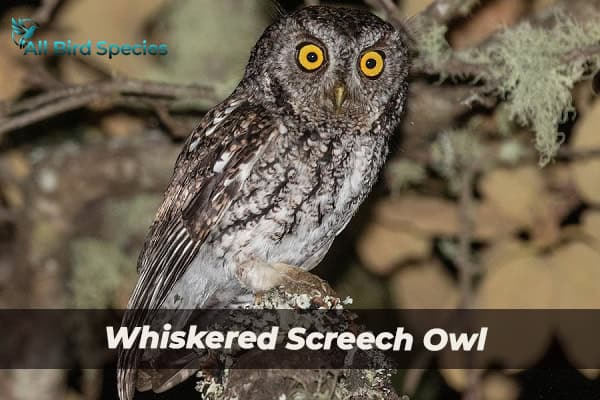
This owls calls Arizona and Central America home, living in dense forests and mountain areas. It’s most active at night, hunting insects like locusts and beetles. Sometimes, it eats small mammals too.
Though hard to spot, you might hear these owls in the Madrean Sky Islands and Madera Canyon. Their calls add to their mysterious charm. Birdwatchers and nature lovers find them fascinating in Arizona’s wild places.
5. Northern Saw-Whet Owl
- Scientific name – Aegolius acadicus
- Lifespan – 7 years (wild); 16 years (captivity)
- Size – 7 to 9 inches
- Weight – 2.2 to 5.4 oz
- Wingspan – 17 to 22 inches
The northern saw-whet owl is one of the smallest and most charming owls in North America. Plus, It has a large, round head and a compact body. Its rich brown feathers are covered with small white spots, making it a joy to see.

Its facial disc is a paler brown, and it has a distinct white Y-shape from the brows. This adds to its cute look.
Physical Description and Range
This owl is slightly heavier than a hairy woodpecker but more compact. It’s smaller than an eastern screech owl, about the size of a robin. They live throughout much of North America.
They can be found from south-central Alaska through southern Canada, the Great Lakes states, New England, and the western United States. They even go as far south as central Mexico.
Habitat and Nesting Sites
The northern saw-whet owl loves living in forests, including mixed and coniferous ones. They make their nests in tree cavities. These can be old woodpecker holes or natural hollows.
The female owl picks the nest site within the male’s territory.
Diet and Hunting Strategies
These owls mainly eat small rodents like voles mice and small birds. They use their amazing hearing and vision to find prey. Then, they patiently wait before attacking their prey quickly.
6. Western Screech Owl
- Scientific name – Megascops kennicottii
- Lifespan – 13 (wild); 19 (captivity)
- Size – 7 to 10 inches
- Weight – 3.5 to 10.8 oz
- Wingspan – 21 to 25 inches
The western screech owl is a fascinating bird in Arizona’s owl family. It’s small, with a brown or gray coat and unique ear tufts. This owl loves living in woodlands all over the western United States, including Arizona.

Identification and Range
This owl stands out with its “V”-shaped pale eyebrows and black face markings. It has mottled feathers with white spots on top and dark, streaked underparts. You can find it from British Columbia, Canada, down to the western USA, and into Mexico.
Habitat and Nesting Preferences
Western screech owls live in different woodlands, like parks, forests, and areas with a few trees. They like nesting in tree holes and also use man-made boxes. Even though they’re night birds, they start moving around just before sunset. This makes them a treat for birdwatchers and nature lovers.
Diet and Hunting Tactics
The owls of Arizona eat small animals like rodents, insects, and small birds. It waits patiently to catch its prey from the ground or in the bushes. It hunts mostly at night.
7. Elf Owl
- Scientific name – Micrathene Whitney
- Lifespan – 3 – 6 years
- Size – 5 to 6 inches
- Weight – 1.4 oz
- Wingspan – 10.5 inches
The Elf Owl is a wonder of nature, being the smallest owl and raptor in the world. They have round heads, yellow eyes, and soft gray and brown feathers. These small birds are a joy to see in their desert and woodland homes in the southwestern U.S. and northern Mexico.

Habitat and Nesting Sites
Elf owls live in different places, like dry forests, deserts, and woodlands. They use old woodpecker holes for their nests, often coming back to the same one every year. These owls sleep all day, hiding in their nests safely.
Diet and Hunting Behavior
Elf owls eat insects, small mammals, and sometimes reptiles. They hunt at night, using their great eyesight and hearing to find food. They usually have 1-5 eggs in spring or early summer.
Fascinating World of Owls
Owls belong to two families: Strigidae (true owls) and Tytonidae (barn owls). They’re experts at hunting in the dark, thanks to their sharp night vision and silent flight. Some owls can be seen during the day too, especially in certain seasons.
Tips for Successful Owling
Owls Spotting In Arizona can be exciting but tricky, as they’re mostly active at night. To increase your chances, learn about local owl species, their calls, and where to look for them. Always be quiet and still to avoid scaring them away and have a great owling experience.
Recommended Related Articles:
Wrapping Up…
Arizona is home to 13 types of owls, from the big great horned owl to the tiny elf owl. These owls live in different places like deserts, canyons, and high forests. They are key to Arizona’s ecosystem. But, many Arizona owl habitats are facing dangers like losing their homes and poisoning. That’s why Arizona owl conservation is vital to keep these amazing birds around.

